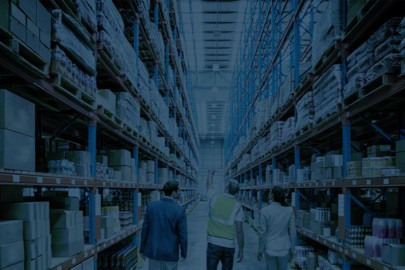Key Considerations When Switching Logistics Providers
Changing a crucial component of a business is hard. Employees often resist change because they are unsure of the outcome. Companies suffer inefficiencies and added costs because they grow accustomed to the status quo. However, businesses cannot afford to stay with a logistics provider when the service impacts profitability and weakens their competitive edge.
The right third-party logistics (3PL) providers can scale to meet seasonal demands and business growth. They simplify operations with technology and provide insights through analytics and reports. Their flexibility means delivering directly to consumers (DTC) or business-to-business (B2B). Finding a logistics provider that meets business needs can improve customer service, reduce costs, and simplify inventory management.
How to Know It’s Time to Switch
Online shopping has changed how purchases are delivered and complicated the supply chain. Customers may buy in-store or online from the same business. They may use a marketplace for the same items. If logistics providers lack omnichannel delivery capabilities, they can limit business growth in unexpected ways.
Mismanaged Deliveries
E-commerce merchants selling through marketplaces must comply with their shipping rules for labeling, delivery times, and packaging. Failure to meet these requirements can result in returned merchandise and chargebacks. Financial penalties eat into profits and returned merchandise not only adds to shipping costs but also limits available merchandise maintained by the marketplace.
Poorly packaged items that arrive damaged contribute to a negative brand image even if the product is undamaged. Consumers expect full refunds on damaged purchases, and returned items increase costs and shrink margins. Missed delivery times only add to a buyer’s frustration.
When organizations experience increased costs for missed or mismanaged deliveries, it’s time to find a different logistics provider. When customer satisfaction rates drop because of delayed or damaged deliveries, it’s time to review the shipper.
Mismanaged Inventory
More 3PL providers are developing distribution networks to ensure faster delivery times. However, managing that inventory can be challenging without the right tools. Processing an order means knowing what inventory is located in which distribution center. Technology is required to determine the closest warehouse to the end user. Without technology, valuable time is lost locating the item and calculating the fastest route, resulting in a three-day instead of a two-day delivery.
Warehouse management systems help 3PLs maximize their warehouse space and scale their resources to accommodate growth. Increased costs for added space can indicate poorly managed or limited storage. Flexibility and scalability are critical capabilities to look for in a 3PL provider. Without them, organizations may be unable to take advantage of market demands.
Rising Costs
Businesses may fail to notice a slight cost increase, but over time, those increases add up. Without realizing it, companies find shipping costs have been creeping up, cutting into the bottom line. For industries with tight margins, even a slight increase can weaken their competitive advantage.
Even if the direct costs have not increased, the overall supply chain costs may have. More errors mean more time spent correcting them, and dissatisfied customers mean more service calls. Productivity declines as staff is shifted to address weaknesses in the supply chain. Businesses feel the pinch of rising costs but struggle to understand them.
If rising costs are hurting the bottom line, consider switching 3PL providers. If staff seems overwhelmed with supply-related problems, consider a new 3PL provider. With the right provider, organizations can reduce costs without sacrificing quality service.
What to Look for in a New Logistics Provider
Comparing providers can become overwhelming without a systematic evaluation process. Make a list of priorities to ensure business needs are addressed and ask questions such as the following of every provider:
- Are DTC and B2B operations supported?
- Is kitting available?
- Can packaging be adapted for each delivery channel?
- What industries do they serve?
- Can they handle specific shipping requirements such as hazardous materials and temperature-controlled storage?
- Does the provider have a distribution network that matches delivery needs?
- What are their technical capabilities?
- Can they provide real-time inventory management?
- Can they manage inventory across multiple channels with full visibility?
- What reporting do they provide?
- Does their customer service include regular calls or updates?
- Do they provide ongoing support?
Aligning 3PL capabilities with business needs improves operations and makes for a smoother transition to a new provider.
Making the Move
Fear is the primary reason organizations resist change. Maybe they’ve had difficult transitions that left long-lasting trauma. Perhaps integrating technologies took too long and delayed business objectives. Whatever the past experiences, careful planning using a phased implementation can help smooth a transition.
Define the Scope
Projects tend to experience “creep,” where new functionality is added without adjusting delivery dates or costs. To avoid project creep, the scope must be defined, and contracts must be signed. Dividing the project into phases helps identify when manual processes can be replaced or when new processes need documenting.
Identify Risks
Understanding the risks at each phase of the transition allows all parties to develop contingency plans to minimize downtime. For example, system integration can have surprises. Placing integration analysis and implementation at the start of the project reduces the project impact if adjustments must be made. A 3PL provider with technical expertise can mitigate system integration risk and identify solutions even for legacy systems.
Establish Phases
Most transitions use phased implementations. Starting with infrastructure concerns such as tech stacks and IT resources makes sure the foundational pieces are working before moving forward. While a phased approach may seem longer, it saves considerable time during implementation. It also allows all parties to identify and mitigate risks at each process step, resulting in a smoother transition with minimal downtime.
Set Milestones
Establishing milestones for each project phase helps keep the move on task. It also ensures background efforts such as training can be performed before a system goes live. Internal procedures can be documented to reinforce training. Communication milestones ensure that all parties know the status and if needed, adjust the plan as required to maintain alignment.
Conduct Testing
Although each transition phase should conduct its testing, the system needs an end-to-end test to ensure the move is working as designed. End-user testing should be performed to ensure operations and sales are comfortable with the new process. It also allows last-minute adjustments before going live.
Going Live
Once the system is live, 3PL companies should maintain open communication channels. They should keep up-to-date on an organization’s business plans. Sharing information on new product releases or an upcoming marketing campaign helps prepare for volume changes. 3PLs should provide the data needed to track key performance indicators (KPIs) to ensure operations are running smoothly.
Finding a 3PL Partner
Switching logistics providers can be disruptive; however, a smooth transition is possible with the right 3PL partner. Organizations experiencing mismanaged inventory and deliveries with rising costs should consider switching to a provider who aligns with their business goals. Symbia Logistics’ distribution network and expertise make it an ideal partner for those looking to switch 3PL providers. Contact us to discuss how to make a move.










